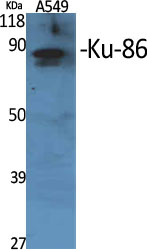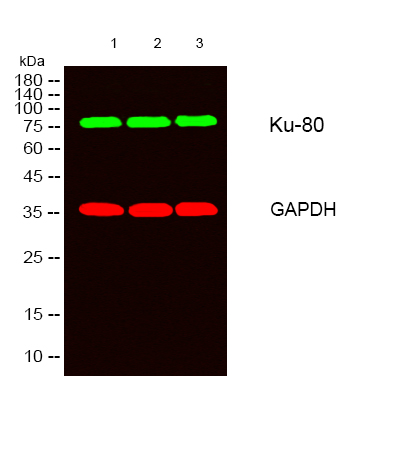CK5/6-FC recombinant protein
- Catalog No.:YD3021
- Reactivity:Human;
- Purity:
- >90% as determined by SDS-PAGE
- Protein Name:
- Keratin, type II cytoskeletal 5 (58 kDa cytokeratin) (Cytokeratin-5) (CK-5) (Keratin-5) (K5) (Type-II keratin Kb5)(CK-6A)(CK-6B)(CK-6C)
- Sequence:
- Amino acid:1-167,with FC tag.
- Formulation:
- Phosphate-buffered solution
- Storage Stability:
- -15°C to -25°C/1 year(Avoid freeze / thaw cycles)
- Other Name:
- Keratin, type II cytoskeletal 5 ;58 kDa cytokeratin;Cytokeratin-5;CK-5;Keratin-5;K5;Type-II keratin Kb5;KRT5;Keratin, type II cytoskeletal 6A ;Cytokeratin-6A;CK-6A;Cytokeratin-6D;CK-6D;Keratin-6A;K6A;Type-II keratin Kb6;allergen Hom s 5;KRT6A;K6A;KRT6D;Keratin, type II cytoskeletal 6B ;Cytokeratin-6B;CK-6B;Keratin-6B;K6B;Type-II keratin Kb10;KRT6B;K6B;KRTL1;Keratin, type II cytoskeletal 6C ;Cytokeratin-6C;CK-6C;Cytokeratin-6E;CK-6E;Keratin K6h;Keratin-6C;K6C;Type-II keratin Kb12;KRT6C;KRT6E;
- Function:
- Required for the formation of keratin intermediate filaments in the basal epidermis and maintenance of the skin barrier in response to mechanical stress (By similarity). Regulates the recruitment of Langerhans cells to the epidermis, potentially by modulation of the abundance of macrophage chemotactic cytokines, macrophage inflammatory cytokines and CTNND1 localization in keratinocytes (By similarity);Epidermis-specific type I keratin involved in wound healing. Involved in the activation of follicular keratinocytes after wounding, while it does not play a major role in keratinocyte proliferation or migration. Participates in the regulation of epithelial migration by inhibiting the activity of SRC during wound repair.
- Subcellular Location:
- Cytoplasm .
- Expression:
- Expressed in corneal epithelium (at protein level) (PubMed:26758872). Expressed in keratinocytes (at protein level) (PubMed:20128788, PubMed:31302245);Expressed in the corneal epithelium (at protein level);Constitutively expressed in distinct types of epithelia such as those in oral mucosa, esophagus, papillae of tongue and hair follicle outer root sheath;Constitutively expressed in distinct types of epithelia such as those in oral mucosa, esophagus, papillae of tongue and hair follicle outer root sheath.

